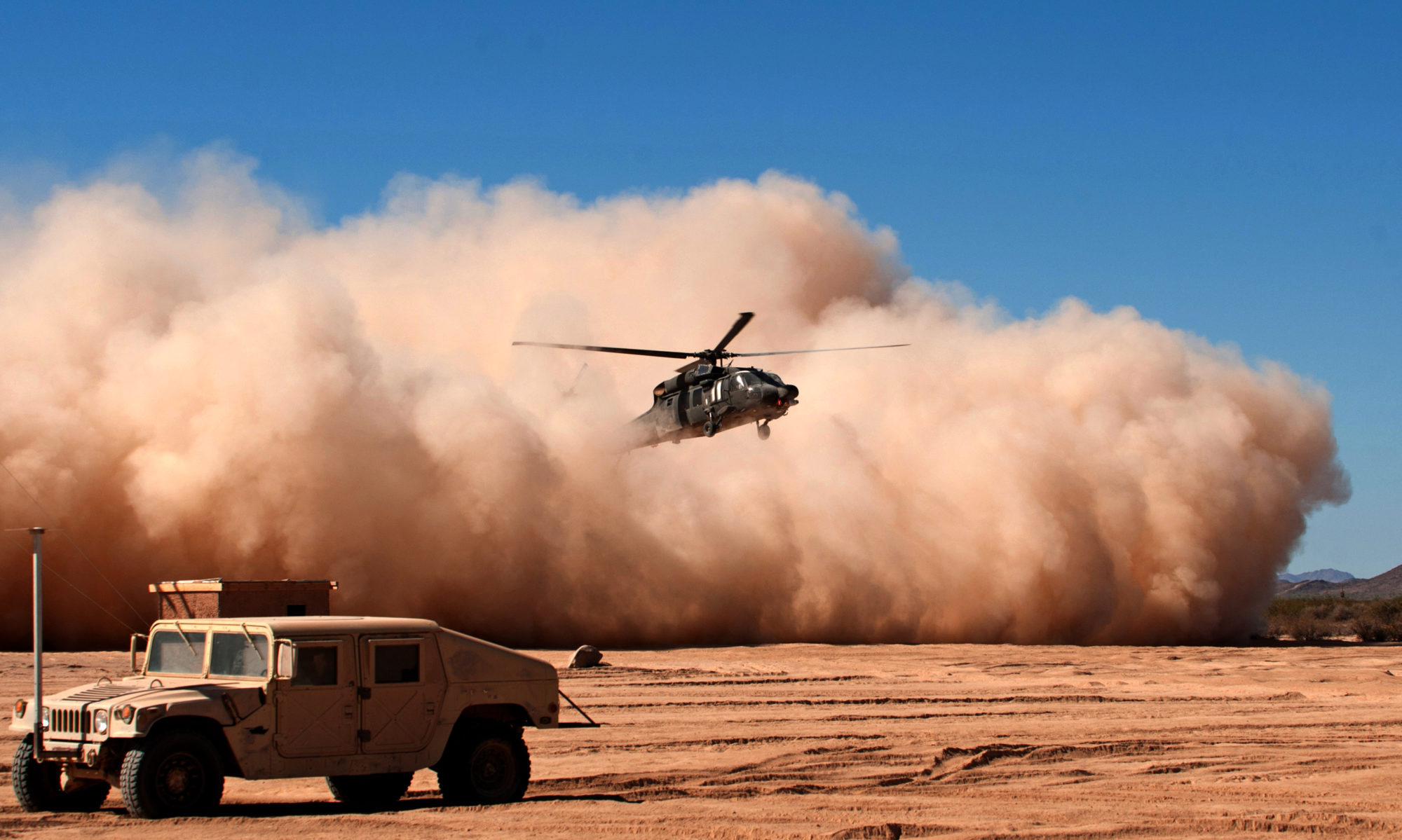Spatial Disorientation is a leading cause of accidents in helicopter aviation often with fatal results. While much has been done regarding training, the accident rates have not changed significantly in more than 20 years.
BLUF (Bottom Line Up Front) – SD accidents are caused by a gap in current training methods. There is no method available, currently, that allows for both visual and vestibular illusions. When pilots encounter actual degraded visibility conditions it will be the first time their brains are forced to work with conflicting data from their sensory systems, specifically their visual and vestibular systems. Proper training must include an environment conducive to both visual illusions brought on through reduced visual conditions and vestibular illusions.
Helicopter aviation has to change the view of SD recovery as a procedure. The dynamic environment of a Degraded Visual Environment and the subsequent SD doesn’t have a single answer or procedure. For example, two pilots in the same aircraft might have very different illusions to the environment and the same pilot during different events might not have the same illusion as previous encounters.
Simulation use has increased significantly in helicopter aviation in the last 10 years. This training is invaluable in a lot of areas. Normal procedures, emergency procedures and mission equipment training to name a few, but where simulation fails is training the Spatial Disorientation brought on by Degraded Visual Environments.
The visual technology in simulators provides a visual representation of the world and it continues to improve. This realism creates visual illusions but even a Full Motion Level D Simulator lacks the travel required to provide the 20 seconds of sustained movement (FAA Spatial Disorientation Pamphlet) that is required to cause vestibular illusions. Once a simulator has reached its travel limit it is no different than when you lay your head on a pillow, with no motion the fluids in the otolith organs are not stimulated. Further, with the limitation of simulator types operators often have to find a simulator that is close to their configuration and others choose a different platform all together.
Others are using multiple methods in the aircraft. This provides the potential for vestibular illusions but current methods do not allow for visual illusions. Once a pilot opens their eyes the visual systems takes over and corrects the vestibular illusions.
The link in the accident chain is the brains cognitive function. The human brain operates in a “Fast Brain – Slow Brain” function. The Fast Brain portion of the brain allows for intuitive response. It uses previous training and experience to quickly respond. In high stress situation, this part of the brain makes the quick response to problems. Slow brain, on the other hand, is the processing part of the brain during normal day to day activities the Slow brain process information and directs actions. During times of high stress, the Slow brain is reduced or excluded from the response.
To compare this to the Skill, Rule, Knowledge research that has been conducted:
Skill – Highly automated, no decision making (Fast Brain)
Rule – Less automated, requires more attention than Skill (Fast/Slow Brain)
Knowledge – Not automated, decision making (Slow Brain)
Let’s look at an example of a DVE induced SD accident: the pilot begins to encounter degrading visual conditions. This could be due to a bad decision to take off or an unexpected weather change. As the visibility decreases, the pilot develops a False Horizon and inadvertently enters into a turn. The illusions give the appearance the aircraft is straight and level when in reality the pilot has begun a turn. The vestibular system as mentioned above can be tricked by the visual system combined with the sustained turn the leans began to develop. At this point, the pilot is Spatially Disoriented due to BOTH visual and vestibular illusions.
As the pilot makes a decision to come inside to the instruments his eyes, looking at an artificial horizon, begin to give conflicting information to the brain. The eyes and ears no longer agree on the condition of the body (or aircraft). This will be the first time a pilot’s brain has had to deal with conflicting data and try to decide what it believes.
Through audio and video publicly available we have heard the high stress level in a pilot’s voice during these encounters. Through the audio (IIMC audio) we can assume a very high stress load. This high stress load reduces the Slow Brain function and allows the Fast Brain to responds based on training. This highlights the lack of effective training. The pilot encountering these conditions has not been trained to disregard the vestibular system and illusions created and focus on the instruments. Given the Fast Brain process the pilot will react intuitively and quickly potentially making a worse condition.
Effective training must provide a method of limiting, not removing, visibility in an environment that vestibular illusions are possible. This environment will train the brain. This training leads to better decision making in the hangar, better decision making as the conditions to deteriorate and lastly the training of the brain will allow the Fast Brain to take correct corrective actions.

